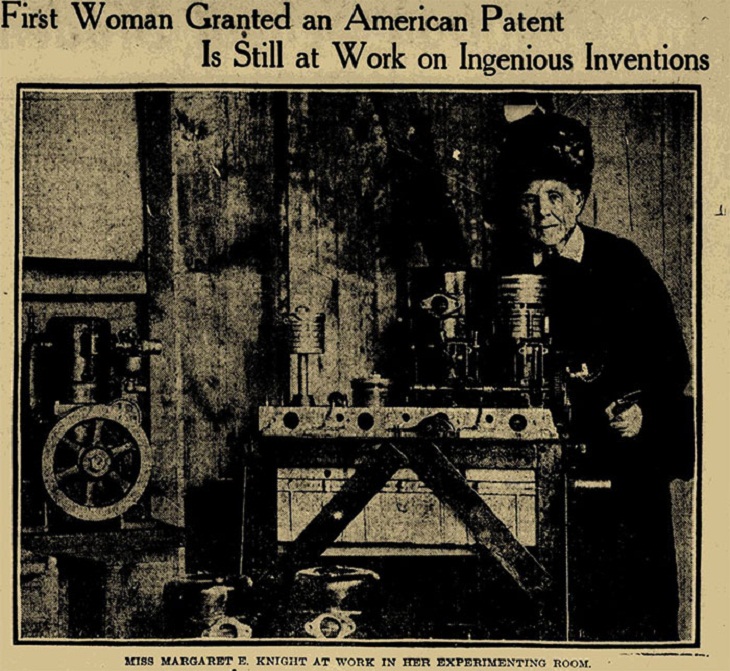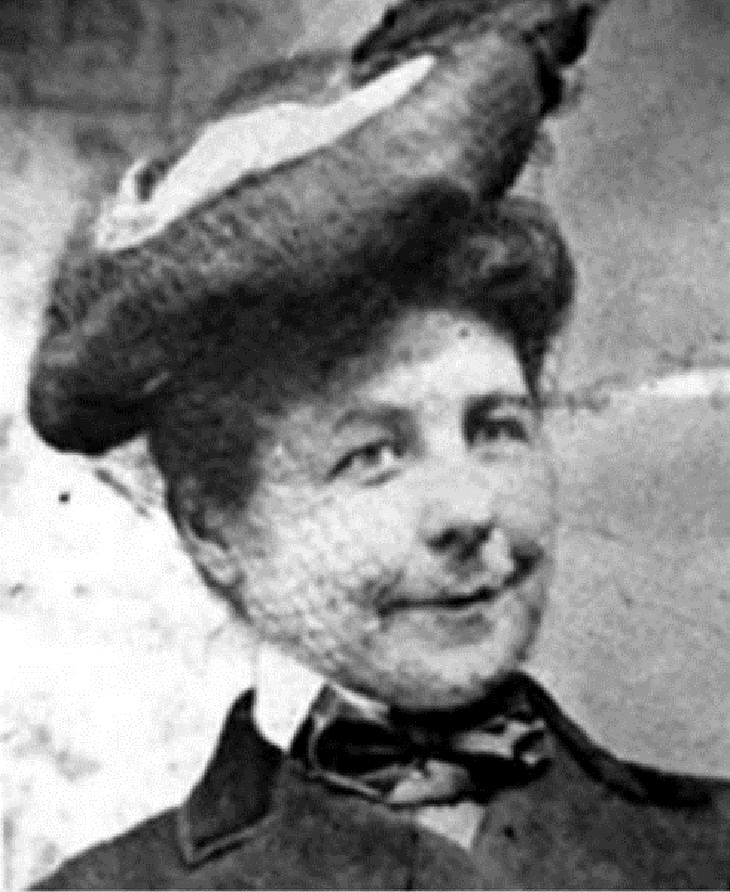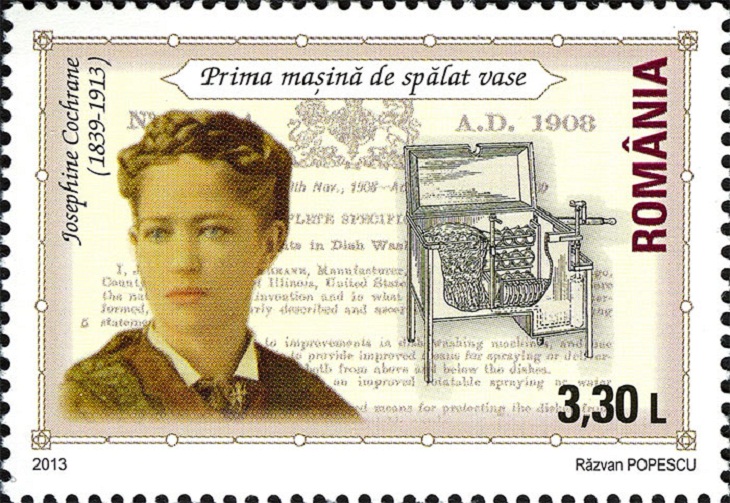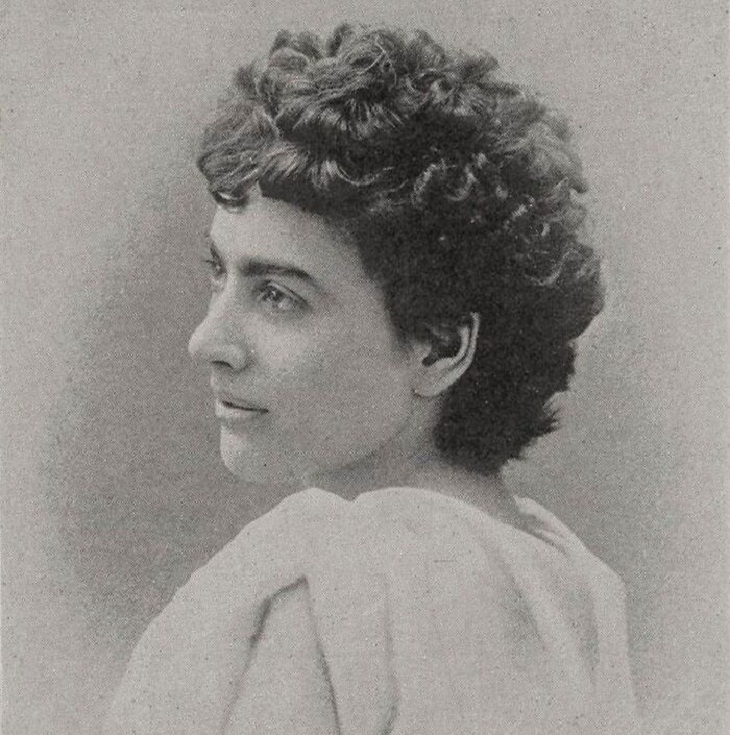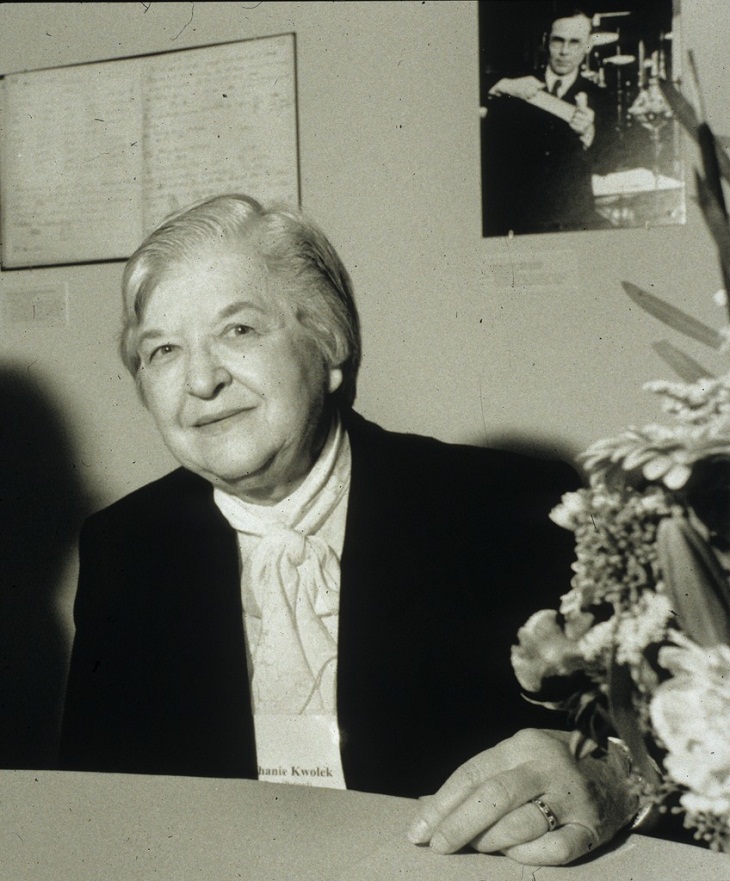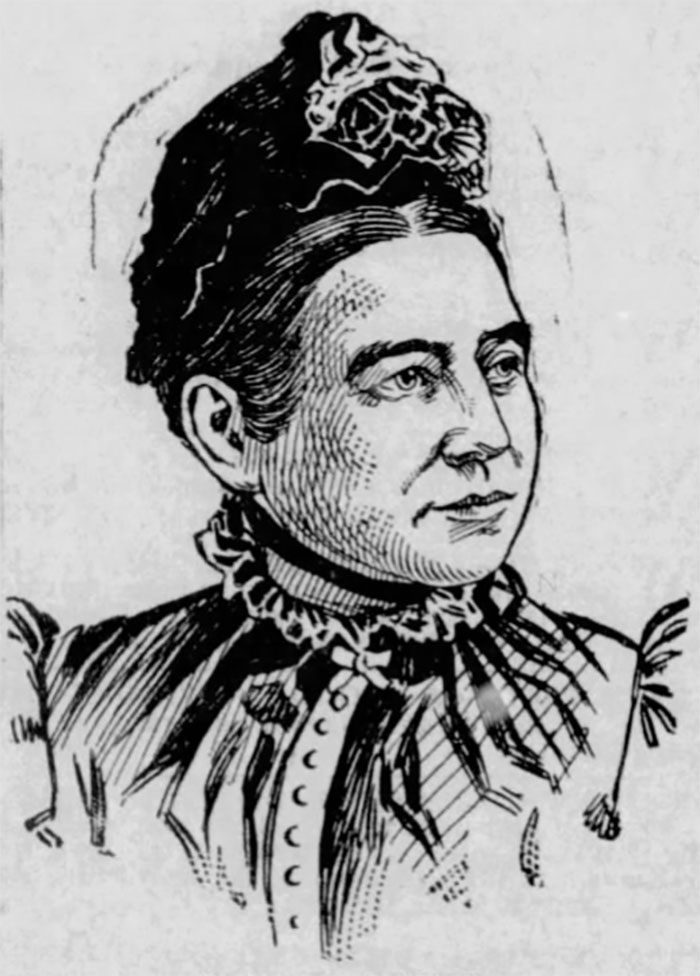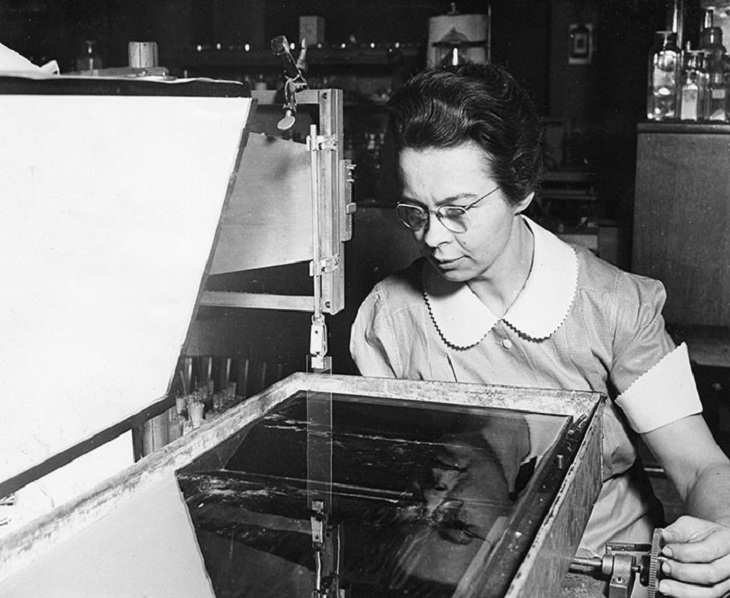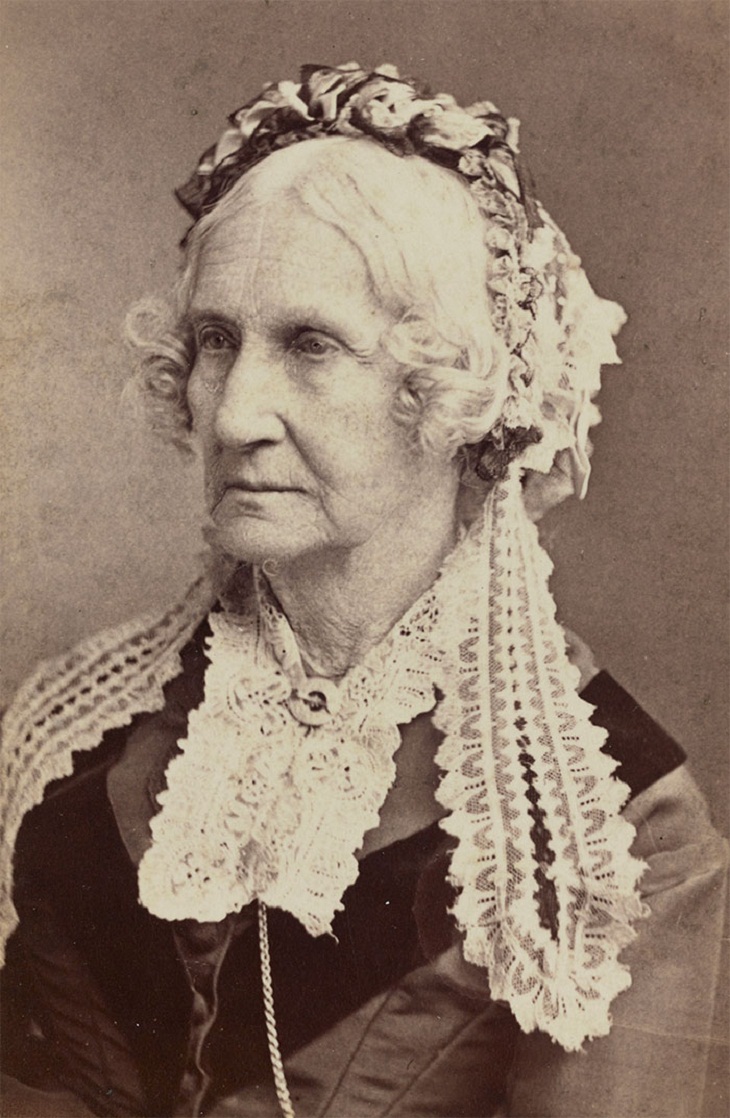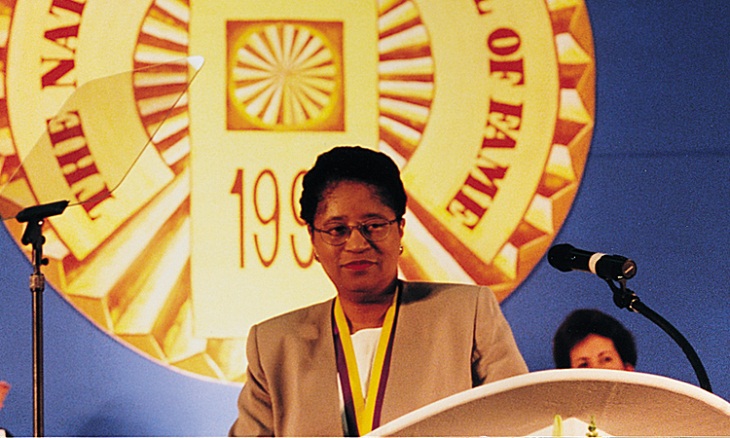During the early 1900s, Margaret Eloise Knight invented a machine that could shape and glue paper into flat-bottomed bags. Her invention caught the attention of a man who stole it and tried to claim the patent as his own. However, Knight took legal action against him. During the court proceedings, he condescendingly asserted that a woman could not comprehend the intricacies of mechanical matters. Knight successfully refuted his claim by providing evidence that she had indeed designed the machine, ultimately securing the right to patent it. Throughout her career, she demonstrated her inventive prowess by creating over 100 machines, 20 of which she patented.
2. Mary Anderson - Windscreen Wiper
On a chilly winter's day In 1902, Mary Anderson noticed the hazards of driving in unfavorable weather while visiting New York City. This experience served as her inspiration to create an innovative solution: a lever placed within the vehicle that would control a rubber blade on the windshield, aimed at improving visibility. Although she initially faced challenges in promoting her invention, by 1922, the windshield wiper had gained widespread recognition and became a standard feature on Cadillac vehicles.
3. Josephine Cochrane – Dishwasher
Josephine Cochrane decided to seek an alternative to handwashing after some of the heirloom dishes chipped during the washing process after a dinner party. Cochrane wanted a machine that could wash her dishes faster than her servants and had a reduced risk of breakage.
The first automatic dishwasher to utilize water pressure was Cochrane's invention. It consisted of a motor that rotated a wheel inside a copper boiler. This innovative device employed pressurized water to effectively clean dishes placed on a rack. Initially introduced to the hotel industry, it eventually became a common household appliance.
Motivated by her late husband's considerable debts, which left her burdened, Cochrane patented her creation in 1886 and established her own production factory. Cochrane's invention revolutionized household chores forever.
4. Elizabeth "Lizzie" Magie – Monopoly
In 1904, Elizabeth Magie designed "The Landlord's Game", a pioneering board game that served as a commentary on unregulated capitalism and was the precursor to the well-known Monopoly. However, Charles Darrow appropriated her creation, claiming it as his own and selling it to Parker Brothers in 1935. Although the company eventually located Magie, they only offered her a mere $500 for her groundbreaking invention. Hasbro (the company that now owns the game) received criticism in 2019 for the release of Ms. Monopoly, a supposedly feminist version of the game that still fails to recognize the woman behind the game's concept.
5. Stephanie Kwolek – Kevlar
During her time at the DuPont Chemical Company, Stephanie Kwolek, an American scientist, made a notable breakthrough. In her research, she accidentally discovered Kevlar (scientifically known as polyparaphenylene), which had a vibrant yellow color and was five times stronger than steel. Originally seeking durable and lightweight materials for tire manufacturing, Kwolek utilized this fiber to create wheels.
Currently, Kevlar boasts over 200 diverse applications, with its primary use lying in the production of bulletproof vests for law enforcement agencies worldwide. Additionally, it finds utility in submarine cables, helmets, aerospace products, and car brakes.
6. Maria Beasley – Life Raft
In 1882, Maria Beasley, a US inventor, took it upon herself to prevent maritime fatalities. Despite centuries of sea navigation, the lifeboats then lacked effectiveness in responding to emergencies. Maria's innovative solution transformed this scenario, saving thousands of lives, including approximately 706 people during the tragic sinking of the Titanic.
7. Katharine Burr Blodgett – Non-Reflective Glass
Katharine Burr Blodgett, an American physicist, made history as the first woman to earn a Ph.D. in physics from Cambridge University. During World War II, Blodgett played a pivotal role in developing various inventions such as gas masks, smoke screens, and a method for de-icing airplane wings. However, it was her contributions to the field of chemistry that led to her most noteworthy achievement: the invention of non-reflective glass.
While working at General Electric, Blodgett discovered that by applying incredibly thin layers of a substance as a coating, she could achieve 99% transmission of light through glass, significantly reducing reflection. In 1938, she patented this groundbreaking technique as the "Film Structure and Method of Preparation." For a substantial period, this method remained the sole means of producing transparent glass. Today, Blodgett's innovation is widely employed in various applications, including eyeglasses, cameras, telescopes, windscreens, computers, and television screens.
8. Nancy Johnson – Ice Cream Maker
The hand-operated ice cream maker invented by Nancy Johnson of Philadelphia in 1843 has become one of the most important inventions in modern history. Her ice cream maker was a manually operated apparatus that relied on a handle to function. It comprised an outer wooden container filled with crushed ice, while an inner cylinder made of tin or pewter held the ice cream mixture for freezing. By securing a lid and inserting the handle through the top of the lid, it was possible to turn the container and freeze the mixture. The mechanism within, attached to the handle, was known as a dasher. Additionally, the inner cylinder could be divided, enabling the simultaneous but separate freezing of two different flavors of ice cream.
9. Dr. Shirley Jackson – Telecommunication research
Shirley Jackson, a theoretical physicist, made history in 1973 as the first African American woman to achieve a doctorate from the esteemed MIT. During her time at Bell Laboratories, she conducted groundbreaking research involving subatomic particles. Her research ultimately paved the way for numerous innovations such as the portable fax, touch-tone telephone, solar cells, fiber optic cables, as well as the technology behind caller ID and call waiting.

